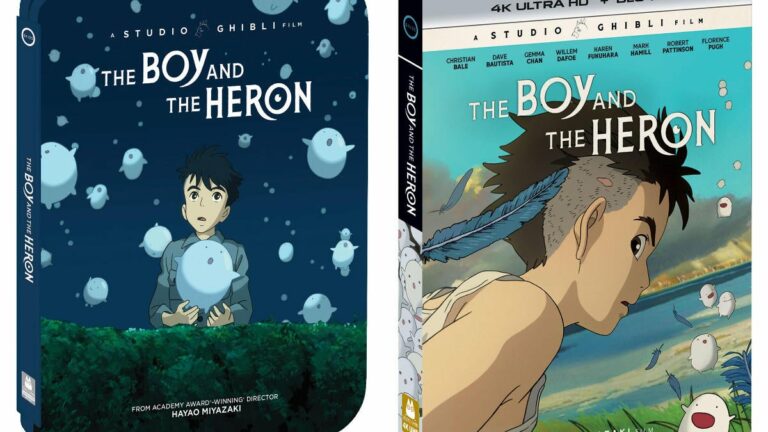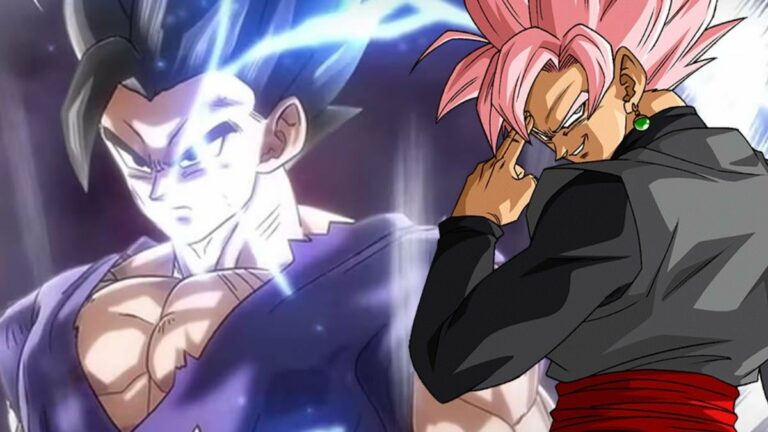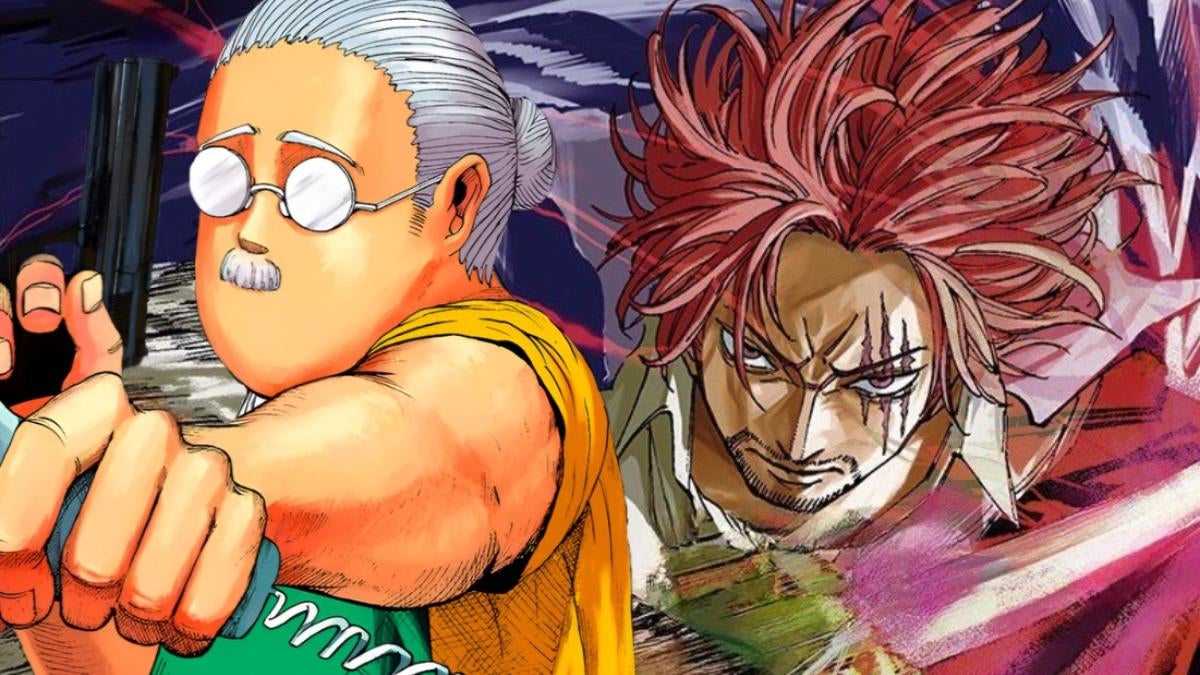
When asked to name the most prominent living anime directors, modern critics will almost always regurgitate the same three names: Hayao Miyazaki, Mamoru Hosoda, and Makoto Shinkai. Apart from his one breakout hit (amongst critics, if not general audiences) Miss Hokusai, the beautiful, emotional, and fantasy-tinged movies of director Keiichi Hara remain underappreciated in the West.
Perhaps this is related to his early career; Hara only finally released his first original movie at the age of 48, after 25 years toiling, essentially unrecognized, in the bowels of the anime industry, churning out kiddies’ franchise film after franchise film. Hara initially planned to become an animator, but became intimidated by the superior artistic skills of his fellow students at animation school. Realizing he could pursue his passion for animation in other ways, he switched tracks to directing. Following his graduation from Tokyo Designer Gakuin College, Hara began his career as animation director on perennial kids anime Doraemon (1983–1986), followed by TV anime ESPer Mami (1987–1989). He became showrunner of the hilariously scatalogical Crayon Shin-chan franchise, and between 1993 and 2005 directed no fewer than thirteen annual Crayon Shin-chan theatrical films.
During his quarter-century directing children’s anime at Tokyo-based studio Shinei Animation, Hara became frustrated at the directorial limitations placed on him as an employee, and felt unchallenged by the material. He loved making cinematic movies and intended to continue directing them until the end of his career, but it was only after twenty years of pushing that the studio finally let him write and direct the film he wanted.

That film was 2007’s Summer Days with Coo, based on a duology of novels by Masao Kogure. Hara himself wrote the screenplay adaptation and directed this lengthy 138-minute movie, best described as a combination of Isao Takahata‘s Pom Poko and Steven Spielberg‘s E.T. the Extra-Terrestrial. The film revolves around fourth-grader Koichi Uehara, whose life changes when he accidentally reanimates a fossilized infant Kappa, and his family must adjust to having a mischievous, mysterious mythical creature as a new member.
Kappas are probably Japan’s most famous indigenous mythical creatures (Yokai). The titular Coo is a very typical Kappa, with a frog-like body, webbed feet and hands, turtle-like shell on his back, bird-like beak, a messy nest of hair, and a water-filled “bowl” on his crown. Kappas must stay near water at all times to prevent their head bowl from drying out.

Like Pom Poko, Summer Days with Coo‘s central theme is the tragedy of “progress” and the destruction of the pastoral, natural world to make way for industrialization and city expansion. In the incredibly violent Tokugawa era opening, Coo’s father is brutally (and bloodily) murdered by a corrupt samurai official who plans to illegally drain the Kappas’ swamp to make way for rice paddies. Flash forward to the modern-day and those rice paddies have been replaced by apartment blocks. Coo has no home to return to, and must rely on his adopted family to help him make sense of a terrifying modern world where his people appear to have gone extinct.
Although it’s a humorous “kappa-out-of-water” story with an episodic narrative structure, Summer Days with Coo tackles unresolved grief, media harassment, animal abuse, sexism, bullying, depression, and suicidal ideation. Its characters are sympathetic yet flawed, realistic in their insecurities and occasional cruelties, but also kind and loving. Children are portrayed as mercurial, judgmental, and unfair to one another, yet also capable of deep love and self-sacrifice. Hara convincingly portrays a close-knit human nuclear family doing its best to protect someone special to them.

Finally released on blu-ray in the U.S. by GKIDS in 2020 and in the UK by Anime Limited in 2021, Summer Days with Coo is now easily available, subtitled in English. There’s unfortunately no English Dub. Due to the occasional (but distressing) violence, plus the fact that Coo is naked with his (small and unobtrusive) genitals on display for most of the film, some parents may find it unsuitable for children under the age of 12. Following the death of the original novel’s author in 2007, Hara himself (along with long-time screenwriting collaborator Miho Maruo) penned a sequel novel, Summer for Coo in Year Six in 2013, illustrated by Summer Days with Coo‘s chief animator Yuichiro Sueyoshi. Neither this, nor the original novels, are currently available in English.
Hara’s second non-franchise film was 2010’s Colorful. By this time he had left Shinei Animation, and the movie was produced by Sunrise and studio Ascension. Based on the novel of the same name by Eto Mori, this was Hara’s first cinematic collaboration with Miho Maruo, who would go on to write the screenplays for each of his subsequent films.

Colorful is a darker, more mature movie than Summer Days with Coo, and certainly not suitable for children. Its central themes include teenage suicide, depression, prostitution, and parental marital infidelity, though it deals with each of these sensitively yet matter-of-factly. A disembodied soul in limbo is offered another chance at life — to inhabit the newly-vacated body of troubled teen Makoto Kobayashi who has recently died by suicide. The “new” Makoto must navigate “old” Makoto’s complicated family and school life without succumbing to the same depression, melancholy, and hopelessness that drove his predecessor to despair and suicide. Colorful very accurately portrays the powerlessness, frustration, and emotional confusion common to adolescents the world over, yet offers hope and redemption.
A deeply humanistic, pro-life fable, Colorful argues life is always worth living, and that suicide is a tragedy that wrecks families and communities. In illuminating the circumstances leading to Makoto’s choice to end his life it invites empathy, even as it gently admonishes him. “New” Makoto is forced to reassess his assumptions about his peers and family, and in doing so learns about their “true colors”. Hara demonstrates that inside every human being are many apparently contradictory attributes, and that no one can be reduced to a single characteristic. We are all filled with myriad colors of emotions, and in order to best understand one another, perhaps we need to walk in another’s shoes, forgetting our preconceptions.

Colorful is a powerful, emotional film that again features a central nuclear family, but this time fractured and weakened by selfishness, betrayal, and lack of communication. As a father and a husband myself, Makoto’s family’s healing and eventual redemption via communication, forgiveness, and self-sacrifice made me cry like a baby. Even a scene as simple as a family sitting down together to eat a meal and talk becomes cathartic and rewarding. I cannot stress how wonderful this movie is. Despite a 2013 U.S. Blu-ray release from Section 23 (with a Dub!), it’s now long out-of-print, and doesn’t stream anywhere either. Colorful was never released in the UK in any form. If any of Hara’s films deserve wider distribution, it’s this one.

In 2013, Hara directed his only live action theatrical release so far, Hajimari no Michi (Dawn of a Filmmaker: The Keisuke Kinoshita Story), a biopic that chronicles the early life and career of legendary Japanese filmmaker Keisuke Kinoshita, framed primarily through his relationship with his mother. Unfortunately Hajimari no Michi has never been released outside of Japan, and without any official English translation, this is likely to remain by far the most obscure of Hara’s films in the West.
2015’s Miss Hokusai brought Keiichi Hara international recognition. This relatively short 90-minute adaptation of the 1980s josei manga Sarusuberi by Hinako Sugiura was produced at prestigious studio Production I.G, and won the Jury Award at 2015’s Annecy International Animation Festival, the Best Animation Film Award at the 70th Mainichi Film Awards, plus prizes at Fantasia, Sitges, and the Asia Pacific Screen Awards.

Structured episodically, Miss Hokusai is a very strange pseudo-historical biopic about Katsushika O-Ei, artist and daughter of the internationally famous painter Katsushika Hokusai. Hokusai is best known for the print series Thirty-six Views of Mount Fuji, of which the most ubiquitous is The Great Wave off Kanagawa. He was renowned for obsessively focusing on his art to the exclusion of all else — cleanliness, money, family relationships — and for much of her adult life, his daughter lived with and assisted him. It’s thought that at least some of his famous art pieces were actually painted by O-Ei.
Set in 1814 in Edo (what would eventually become Tokyo), Hokusai is around 54 years of age, while O-Ei is in her early twenties. Their various escapades are only loosely connected, the passage of time marked mainly by the growth of their pet dog with each successive vignette, and the changing of the seasons. Hara mixes in supernatural elements like dragons, out-of-body-experiences, ghosts and kaiju-sized Buddhas with a convincing historical setting and an anachronistic rock soundtrack in what amounts to a collection of shaggy dog stories.
O-Ei wants to grow as an artist, as although she is technically proficient, her drawings lack passion(much of her father’s work was essentially pornographic, or at least erotica). In many ways, she’s an innocent — unsure how to act around men, she has no romantic experience. Her disastrous visit to a brothel is particularly funny.

The emotional heart of the movie is the relationship between O-Ei and her younger sister O-Nao, tragically ignored by her unreliable, itinerant father. O-Nao’s poor health and blindness frightens Hokusai so he avoids even visiting her. O-Ei makes time to show O-Nao the smells and sounds of Edo, and her childlike wonder is both delightful and heartbreaking. Hokusai himself is portrayed as a terrible father, a selfish and driven man, despite his incredible talent. The way he is presented suggests he’s somehow neurodivergent, a common explanation for the achievements of historical “geniuses”.
Because of its odd structure and lack of plot progression, Miss Hokusai is a difficult movie to recommend to general audiences, though I can certainly appreciate how such a work about art and artists, and their creative processes, would be popular with film critics. It’s easily available, dubbed and subtitled in English on Blu-ray in the U.S. from GKIDS and in the UK from Anime Limited.

Bringing us up to date, Keiichi Hara‘s most recent film is 2019’s Birthday Wonderland (known as The Wonderland in the U.S.), based on the short story Strange Journey from the Basement by Sachiko Kashiwaba and animated by Fuji Animation Studios. Of all Hara’s films since 2007, this is the one most suitable for a younger audience, receiving a PG rating in the UK, while the others are rated “12”. It’s also a rather lengthy film, around 115 minutes in duration.
Unlike his other movies, Birthday Wonderland shelves any pretense of fantastical realism and drops main character (and reluctant heroine) Akane into a chaotic, colorful fantasy world that evokes The Wizard of Oz, Alice in Wonderland and The Chronicles of Narnia. Yes, it’s a real old-style isekai where the main character isn’t horribly murdered by a truck, and actually wants to go home to her own world. In fact Akane wants to go home through most of the story, and really would prefer to avoid becoming “The Goddess of the Green Wind” to prevent a plot to destroy The Wonderland.

The most obviously Ghibli-esque of all Hara’s films, Birthday Wonderland looks utterly gorgeous, with multitudinous fantasy landscapes just bursting with detail and color. There’s the rolling farmland filled with crimson flowers and enormous fluffy sheep, a snowy land that’s somehow(?) running out of water, enormous trees with Christmas-bauble shaped fairy villages, fantasy castles with triangular doors, and a cat-run city surrounded by stripy undulating hills. There’s always something beautiful to look at.
Birthday Wonderland‘s cast are a hoot. Akane herself is a true-to-life young adolescent with anxieties and self-confidence issues, who prefers to hide at home rather than confront interpersonal difficulties with her school friendship group. She gradually grows in confidence in a pleasing, organic way. My favorite character of all Hara’s films is most certainly Akane’s energetic, youthful, and free-spirited Aunt Chii. Chii runs a curiosity shop full of bizarre trinkets, has travelled widely and jumps at the chance to muscle in on Akane’s otherworld adventure. She’s simultaneously the adult in the room and the biggest kid, protective of Akane but wide-eyed at the pretty colors and new experiences.

Again, like Summer Days with Coo and Miss Hokusai, Birthday Wonderland has a very episodic structure. Partly that’s due to its nature as a road movie, but I wonder if this is Hara’s favored story structure? Perhaps it’s integral to the stories he chooses to adapt, but apart from Colorful, none of his films conform to a standard three- or four-act film structure. Your patience with them may depend on your tolerance for this more traditional, almost ancient form of storytelling.
Although it’s the least emotionally substantial of Hara’s movies, Birthday Wonderland is a lot of fun. At almost two hours, it could have done with a bit of extra editing during a slightly slow middle section, but otherwise it’s a delightful fantasy road trip. It’s also easily available, dubbed and subtitled in English on Blu-ray from Shout! Factory in the U.S., and Anime Limited in the UK.
Three out of five recent films available to watch on physical media isn’t the worst of ratios, but I wish someone would re-license Colorful, as it’s definitely my favorite of Keiichi Hara‘s movies. All of his animated films are worthwhile to watch, and it’s criminal that he’s so relatively unrecognized as a director amongst anime fans in the West. I’ve no idea what his next project is, but I can’t wait to watch it when it’s finally released.
Kevin Cormack is a Scottish medical doctor, husband, father, and lifelong anime obsessive. He writes as Doctorkev here and appears regularly on The Official AniTAY Podcast. His accent is real.




